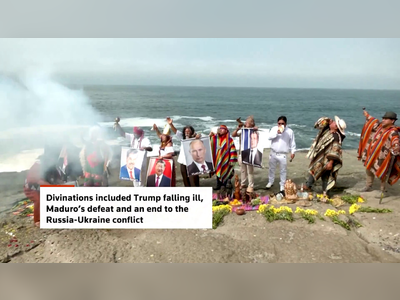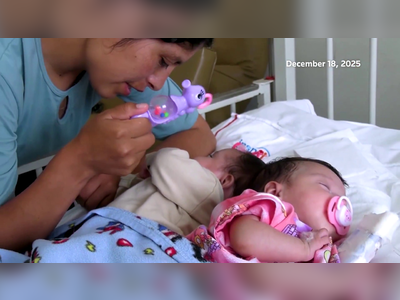Understanding Human Metapneumovirus: Recent Outbreaks and WHO's Stance
Despite rising cases in China, the WHO dismisses pandemic concerns over the Human Metapneumovirus.
In recent weeks, outbreaks of a respiratory illness in China and Malaysia have raised concerns among some sectors.
The disease in question is caused by the Human Metapneumovirus (HMPV).
However, the World Health Organization (WHO) and health ministries, such as in Costa Rica, deny issuing any alerts or warnings, stating that this pathogen does not possess the pandemic potential akin to SARS-CoV-2, the virus responsible for COVID-19.
The Human Metapneumovirus is not a newly discovered virus.
Identified by scientists in the Netherlands in 2001, it is believed to have been present globally for decades prior to this discovery.
In places like Costa Rica, HMPV is regularly detected and was one of the most common viruses towards the end of 2024, especially affecting children alongside the Respiratory Syncytial Virus (RSV) and rhinoviruses.
According to the WHO, HMPV belongs to the Paramyxoviridae family, which also includes the viruses responsible for measles, mumps, and RSV. Unlike coronaviruses, this virus has an RNA genome, allowing for high mutation rates.
Similar to other respiratory viruses, HMPV spreads through airborne droplets from infected individuals.
The incubation period ranges from three to five days, with most cases manifesting as mild respiratory symptoms, including cough, sneezing, and shortness of breath.
Vulnerable populations such as young children, the elderly, and immunocompromised individuals may experience severe symptoms leading to hospitalization due to bronchitis or pneumonia.
There has been concern in China due to an observed increase in HMPV cases.
However, this is typical during the winter months and has not resulted in a significant rise in hospitalizations or deaths.
International organizations, including WHO, have not issued any warnings, attributing media reports of increased cases to the seasonal nature of the virus and potential misinformation.
Experts argue that HMPV does not possess pandemic potential due to its longstanding presence within human populations, which have developed some level of immunity over decades.
Unlike SARS-CoV-2, which emerged as a novel virus, HMPV's genetic mutations do not significantly alter its transmission or lethality.
Preventive measures recommended by the Centers for Disease Control and Prevention (CDC) are similar to those for other respiratory viruses: maintaining personal hygiene, wearing masks if symptomatic, avoiding crowded places, and ensuring good ventilation in indoor spaces.
Currently, there is no vaccine or specific antiviral treatment for HMPV. Treatments focus on symptom management, typically involving fever reducers and maintaining hydration.
Health authorities advise against self-medication and stress consulting medical professionals for appropriate care recommendations.
The disease in question is caused by the Human Metapneumovirus (HMPV).
However, the World Health Organization (WHO) and health ministries, such as in Costa Rica, deny issuing any alerts or warnings, stating that this pathogen does not possess the pandemic potential akin to SARS-CoV-2, the virus responsible for COVID-19.
The Human Metapneumovirus is not a newly discovered virus.
Identified by scientists in the Netherlands in 2001, it is believed to have been present globally for decades prior to this discovery.
In places like Costa Rica, HMPV is regularly detected and was one of the most common viruses towards the end of 2024, especially affecting children alongside the Respiratory Syncytial Virus (RSV) and rhinoviruses.
According to the WHO, HMPV belongs to the Paramyxoviridae family, which also includes the viruses responsible for measles, mumps, and RSV. Unlike coronaviruses, this virus has an RNA genome, allowing for high mutation rates.
Similar to other respiratory viruses, HMPV spreads through airborne droplets from infected individuals.
The incubation period ranges from three to five days, with most cases manifesting as mild respiratory symptoms, including cough, sneezing, and shortness of breath.
Vulnerable populations such as young children, the elderly, and immunocompromised individuals may experience severe symptoms leading to hospitalization due to bronchitis or pneumonia.
There has been concern in China due to an observed increase in HMPV cases.
However, this is typical during the winter months and has not resulted in a significant rise in hospitalizations or deaths.
International organizations, including WHO, have not issued any warnings, attributing media reports of increased cases to the seasonal nature of the virus and potential misinformation.
Experts argue that HMPV does not possess pandemic potential due to its longstanding presence within human populations, which have developed some level of immunity over decades.
Unlike SARS-CoV-2, which emerged as a novel virus, HMPV's genetic mutations do not significantly alter its transmission or lethality.
Preventive measures recommended by the Centers for Disease Control and Prevention (CDC) are similar to those for other respiratory viruses: maintaining personal hygiene, wearing masks if symptomatic, avoiding crowded places, and ensuring good ventilation in indoor spaces.
Currently, there is no vaccine or specific antiviral treatment for HMPV. Treatments focus on symptom management, typically involving fever reducers and maintaining hydration.
Health authorities advise against self-medication and stress consulting medical professionals for appropriate care recommendations.











